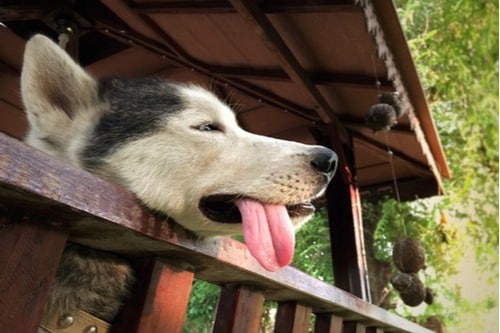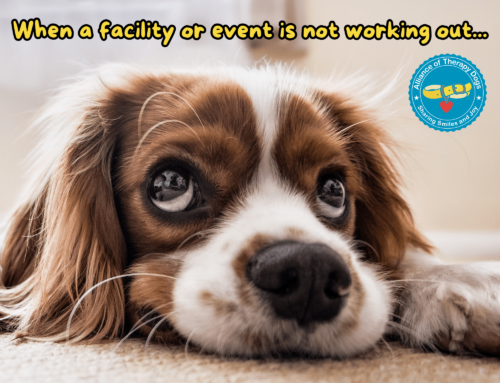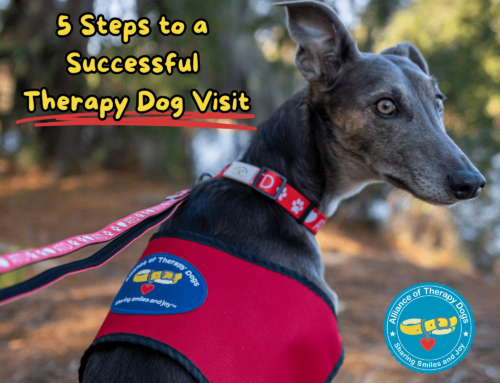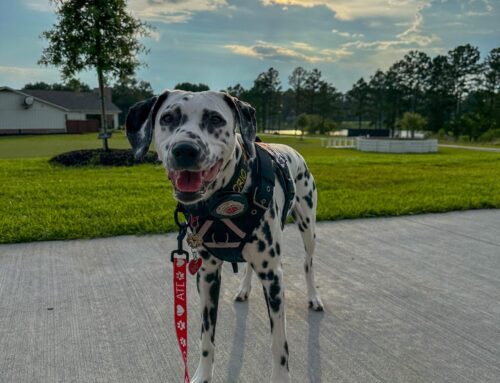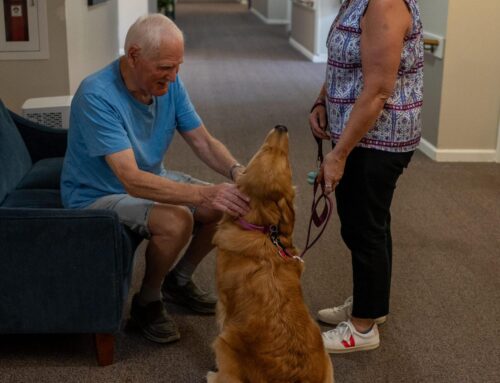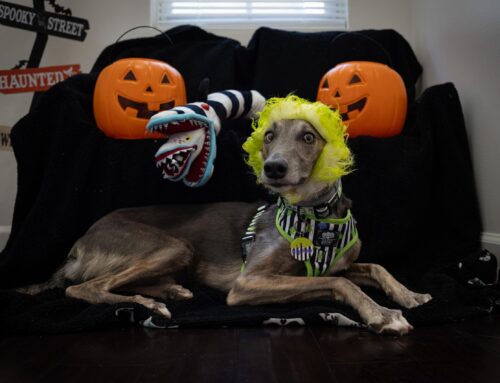Summer is upon us, which means fun days out in the sun. For dog owners, that means getting to spend more time outdoors exploring with your pup.
While taking your dog out in the sunny weather is a fun activity, you must do it safely and keep your dog from getting over-heated.
In many parts of the United States, the summer months can be scorching, with some states seeing temperatures nearing 100°F at their hottest.
As such, you need to make sure that your dog is safe and that they don’t get over-heated. If your dog does spend too much time in the sun, then it could develop heatstroke.
Heatstroke is bad in humans, but it is equally tough on dogs. In extreme cases, heatstroke can kill dogs, which is why it’s so crucial that you’re prepared and careful during the summer months.
Dogs are vital to our work here at The Alliance of Therapy Dogs, which is why we’re so deeply committed to helping dog owners to keep their pets safe.
If you’re unsure about how to keep your dog safe from heatstroke over the summer or want to know how to spot signs of the issue, then this is the guide for you. So carry on reading, and we’ll show you what to look out for in your pet if you suspect heatstroke, what to do, and how to prevent heatstroke in dogs as much as possible.
Common Symptoms Of Heatstroke In Dogs
If your dog has spent a lot of time in the sun, then you might be concerned that they have heatstroke. The main symptom is heavy, labored breathing and severe panting.
Other symptoms of heatstroke in dogs include:
- Signs of confusion or dizziness
- Whining and signs of discomfort
- Drooling or foaming at the mouth
- Vomiting or diarrhea
- Red gums and warm fur
- Shaking limbs
- Loss of consciousness
This list of symptoms isn’t exclusive; every dog is different, so your dog might show a unique combination of these symptoms or others not listed here.
If you’re concerned about your dog’s behavior or general health during the summer or at any other time of the year, then you should take them to the vet.
How To Prevent Heatstroke In Your Pup
The simplest way to keep your precious pup safe from heatstroke is to keep them out of the sun as much as possible. That means taking them for walks in the evening or early morning when the weather is cooler, and the sun is lower in the sky.
Additionally, there are other ways that you can reduce your dog’s chances of getting heatstroke, including:
- Place your hand on the ground before you go out: if it’s too warm on the sidewalk, then wait or take your dog to somewhere cooler with grass.
- Use a harness instead of a collar to keep your dog’s face clear and make it easier for them to breathe.
- Carry a selection of homemade cooling treats for your pet
- Keep cool water with you at all times and put it in front of your pet regularly
- Try not to travel in the car with your dog when it’s warm if possible: if you have to take them in a vehicle, then make sure the window is open and they have ventilation
- If your dog has a heavy winter coat, then consider having them clipped by a groomer before the summer begins
- Check your pet’s health and behavior often throughout the day, and if in doubt, visit the vet
It goes without saying that you must also avoid putting your dog in a hot car or leaving them in an exposed area without any shade.
If you notice another dog in a hot car or exhibiting signs of heatstroke, then you should contact the police straight away and do your best to help the dog.
Learn What To Do In Case Of An Emergency
If your dog does exhibit signs of heatstroke, then you need to know what to do. The first step is to get them out of direct sunlight and into a shaded area.
In many cases, the issue might be that your dog is tired, and needs to recover, so you should take action straight away.
Then, you should pour cool water onto them. Ensure that the water isn’t too cold to give their body a shock but is cool enough to bring their temperature down.
You should also give them some fresh, cool water to drink so that your dog can rehydrate and replace some of the fluids they’ve lost through sweat and panting. Encourage your dog to drink, but don’t force them to do so if they don’t want to.
Keep a close eye on your dog, and check that their breathing is settling and that they look more comfortable. If you’re concerned that the symptoms persist and your dog has heatstroke and isn’t just too warm, then take your dog to the vet immediately.
Your vet can give your dog intravenous fluids to try and revive them, and then keep watch on your pup while they recover.
By being proactive, you can ensure that your dog stays safe and still has lots of fun in the summer sun. Of course, every dog loves to play when the weather is warm, but you must keep them safe and cool.
If you’re interested in more dog care tips, then check out the regularly updated blog from the Alliance of Therapy Dogs. Our team is all dog lovers and experienced owners, and we’re happy to offer insight and support to dog owners and alliance members.
To get additional support and give back to your local community, you could also consider joining us and seeing if your dog could become a therapy dog.
For anyone who’s not sure if their dog is the right fit to be a therapy dog, then you can contact us, and we’ll be happy to help. We look forward to hearing from you!

